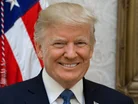Reviewing Trump's First Term to Prepare for the Second

2025 sees Donald Trump assumes the role of the 47th President of the US, embarking on his second, non-consecutive term.
This moment in politics is met with mixed emotions: his advocates eagerly await the reinforcement of the "America First" doctrine, whereas detractors worry about its global and domestic impacts.
Central to his previous presidency was what's been dubbed the 'Trump tariffs', high tariffs on international trade.
We already know we'll be seeing them again, only intensified.
Unpacking the Trump tariffs
The Trump tariffs, a hallmark of his initial tenure, sought to protect US industries and alter global trade interactions.
Imposing import duties on products from nations like China, Mexico and Canada, these tariffs became foundational to his economic approach.
Trump once called tariffs his "favourite word in the dictionary," indicating their importance in his presidential strategy.
Benefits of the Trump tariffs
- Shielding domestic industries
The major ambition behind the Trump tariffs was to defend American businesses from overseas competitors. The levied import duties aimed to encourage consumers to opt for American products, thereby protecting jobs and sustaining essential sectors of the economy.
- Augmenting federal income
These tariffs also served as a direct source of revenue for the government, providing a fiscal uplift, especially during times of trade deficits when reducing dependency on foreign imports was strategic.
- Stimulating domestic production
Proponents argue that the tariffs incentivised companies to retain or re-establish manufacturing facilities in the US. The elevated import costs made local production more appealing, potentially heightening the resilience of supply chains and fortifying national security.
Drawbacks of the Trump tariffs
- Elevated prices for consumers
A direct consequence of tariffs is the rise in consumer prices. Enhanced production and import expenses meant that prices surged for everyday items such as electronics, groceries and cars. Analysts contend that these policies slashed the US GDP by as much as 0.64%, with American families feeling most of the pinch.
- Global economic ripples
Trump's tariffs reverberated well beyond the US, disturbing global trade. Notably, China faced a GDP reduction of approximately 0.68%, and the European Union, as well as other trade partners, encountered significant economic challenges. These disruptions underscore the complexity of contemporary trade systems.
- Inflating costs
Furthermore, tariffs escalated production costs leading to inflation. Such scenarios often compel central banks to hike interest rates, which increases borrowing costs and suppresses economic growth.
- Retaliation by trade partners
A critical issue was the potential for retaliatory tariffs by affected nations. Responses from countries like China and Mexico brought about heightened trade tensions and threatened to destabilise global economic harmony.
Which nations felt the impact?
China: The imposition of tariffs on US$370bn worth of Chinese goods markedly dented its economy and shifted trade patterns.
Mexico: A proposed 25% tariff on Mexican products posed severe economic threats given its close trade ties with the US.
Canada: A similar tariff threatened Canada's export-driven industries, potentially leading to industrial disruptions.
European Union: Although less frequently targeted, the EU and Germany in particular, was at risk due to its export-reliant sectors like automotive manufacturing.
The legacy of Trump’s trade policies
By the end of his first term, Trump had applied tariffs across diverse merchandise types.
Although some policies were revisited by the Biden administration, many persisted, indicating their enduring influence on US trade strategy.
Trump audaciously declared: "Trade wars are good and easy to win," showcasing his faith in tariff efficacy.
Yet, as his presidency unfolds once more, the lasting debate around these policies continues to highlight the complex interplay between national interests and global economic realities.
Explore the latest edition of Manufacturing Digital and be part of the conversation at our global conference series, Manufacturing LIVE.
Discover all our upcoming events and secure your tickets today.
Manufacturing Digital is a BizClik brand.


